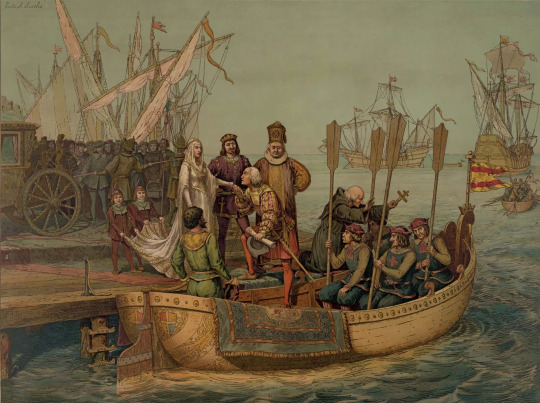Text
ESSAY: Water: The Elixir of Life
Water, the wellspring of life, stands as a fundamental and irreplaceable cornerstone of our planet. Its preservation extends beyond the realms of practicality and duty, reaching into the very core of our being. Water conservation is depicted as a sacred duty. The essay underscores the finite nature of freshwater resources and the ever-growing global demand for clean water. It emphasizes that wasting water is not only ecologically irresponsible but morally unjust when billions of people lack access to safe drinking water. Water is symbolized as the "elixir of life." It represents purity, renewal, and interrelations. The author paints a vivid picture of the life-giving properties of water, from sustaining ecosystems to nurturing human existence. The author's message is clear and urgent: water conservation is not merely an environmental issue but a moral and social one. In conclusion, the exploration of water conservation in this essay underscores the undeniable importance of safeguarding this precious resource. Water, often referred to as the "elixir of life," stands as a fundamental and irreplaceable element in our world.
A piece of advice from my essay is reduce waste with conscious practices because this tells us the significance of reducing wastage, and one of the most straightforward ways to achieve this is through mindful practices.
Install Water-Saving Fixtures because these simple changes can significantly reduce water consumption without sacrificing comfort.

0 notes
Text
RIPPLES OF HOPE
In "Ripples of Hope," is a poignant and lyrical poem that explores the theme of water conservation. The poem uses water as a powerful symbol of life and interconnectedness, emphasizing the importance of preserving this precious resource. It conveys an urgent message about the responsibility of individuals to protect and conserve water for the benefit of the environment and future generations. The water conservation is portrayed as a powerful force of change and renewal. The poem uses water as a symbol of life and resilience, emphasizing the importance of preserving this precious resource. The author's message is a call to action, urging us to recognize the value of water as a precious resource and to take immediate steps to protect and preserve it for future generations. Through its imagery and metaphor, the poem successfully evokes a sense of responsibility and hope in the reader, inspiring a deeper understanding of the importance of water conservation.
Small acts, big impact: Just as ripples in a pond can create far-reaching effects, remember that even your modest efforts can make a difference in water conservation.
Be Mindful of Water Usage: Reflect on the wisdom of water's interrelation with life. Use water judiciously when taking showers, doing dishes, and watering plants. Turn off the tap while brushing your teeth or lathering your hands with soap.

0 notes
Text
The Struggles of Water Defenders in Cochabamba, Bolivia
The historical topic we will be discussing is the Cochabamba Water War, which occurred in Cochabamba, Bolivia, in the year 2000. This event holds significant relevance to contemporary water conservation issues, as it serves as a compelling example of a grassroots movement's struggle to protect access to clean and affordable water, a challenge that continues to be of global concern today. The Cochabamba Water War unfolded against the backdrop of the late 20th and early 21st centuries in Bolivia. In the 1990s, Bolivia, like many other countries, was influenced by the neoliberal economic policies advocated by international organizations such as the World Bank and the International Monetary Fund. As part of these policies, the Bolivian government decided to privatize public services, including the municipal water supply system, in an attempt to attract foreign investment and reduce public spending. Oscar Olivera was a prominent figure in the Cochabamba Water War and played a central role in mobilizing the local population against water privatization. One of the impacts would be reclamation of water resources. The most immediate and direct impact of the Cochabamba Water War was the reclamation of the municipal water supply system from private control. The Cochabamba Water War is a historically significant event that continues to resonate with contemporary water conservation challenges. It exemplifies the need for equitable access to clean water, the power of grassroots activism, the importance of international solidarity, and the value of legal recognition of the right to water. The lessons learned from this struggle are invaluable in guiding our efforts to address present-day water conservation issues and shaping policies that ensure water remains a universal and protected human right.

0 notes
Text
The Ramsar Wetland Conservation Movement
The Ramsar Wetland Conservation Movement, anchored by the Ramsar Convention, represents a pivotal historical development in the global effort to protect and preserve wetlands, and it bears profound relevance to contemporary water conservation issues. This international movement, with its roots in the 1970s, highlights the recognition of wetlands as critical ecosystems that provide essential services for both nature and humanity. The historical context of the Ramsar Wetland Conservation Movement showcases the emerging global recognition of wetlands as vital ecosystems for biodiversity, water resources, and human well-being. The Convention's principles of sustainable use, international collaboration, and ecological conservation remain highly relevant to addressing contemporary water conservation issues, including climate change, habitat loss, and pollution. The signatory countries to the Ramsar Convention are key players in implementing water conservation practices because they designate and manage Ramsar Sites, develop national policies, and collaborate with other nations to protect and conserve wetlands. The Ramsar Convention significantly raised global awareness about the ecological importance of wetlands. The Ramsar Convention has contributed to raising awareness about the importance of wetlands. In a time when public support for conservation is crucial, its historical significance is evident in its capacity to inspire individuals and communities to take action. In conclusion The Ramsar Wetland Conservation Movement, symbolized by the Ramsar Convention, stands as a beacon in the history of water conservation. It emerged at a critical juncture when the world was awakening to the environmental consequences of neglecting wetlands.

0 notes
Text
The Water Laws of Isabel The Catholic and her Legacy
The water laws of Isabel the Catholic and her legacy are a significant aspect of her reign as the Queen of Castile from 1474 to 1504. Her policies related to water management and regulation have had a lasting impact on Spain's agricultural practices and laid the foundation for sustainable water use. In this discussion, we will explore the historical context and the enduring significance of Isabel the Catholic's water laws. Isabel I of Castile, known as Isabella the Catholic, reigned as the Queen of Castile from 1474 to 1504. Her reign was a pivotal period in Spanish history, marked by various policies and reforms, including those related to water management. One of the key figures were the Mesta, a prominent organization of sheep farmers, had a significant influence on water use in Spain during Isabel's time. Their large flocks required access to water sources during migrations, sometimes causing conflicts with agricultural communities. Isabel the Catholic's actions and regulations regarding water management had a profound and enduring impact on water conservation practices in Spain. Her policies promoted sustainability, equitable water distribution, and responsible resource use, setting a historical example that continues to inform modern water conservation efforts. The historical lessons from Isabel's reign offer a source of guidance and inspiration. They demonstrate that solutions to contemporary water issues can be rooted in historical practices, and that by learning from the past, we can create a more sustainable and equitable future for our water resources. In conclusion The water laws of Isabel the Catholic and her legacy in water management stand as a testament to the enduring significance of historical practices in addressing contemporary challenges. Her reign, marked by the unification of Spain, provided a pivotal moment in the development of water conservation principles.

0 notes
Text
THIRST
The work "Thirst" by Javier Castillo presents a dystopian world where water has become a scarce and precious resource. Water conservation is described as a desperate fight for survival. The characters are faced with the need to ration and protect water, and the lack of this resource is a constant threat. Water in the novel symbolizes the life, abundance and prosperity that have been lost in this world devastated by scarcity. Water represents hope and the possibility of a better future. Javier Castillo through "La Sed" warns about the catastrophic consequences of the overexploitation of natural resources and the importance of water conservation. The author's message highlights the need to take preventive measures to preserve our water resources and avoid a dark future like the one presented in the novel.
Some advices to the water care are:
Wash clothes and dishes with a full load because it avoid doing washing machines or washing dishes with a half load, as this wastes water and energy.
Another tip is to educate your loved ones and friends about the importance of water conservation and share tips to reduce water consumption.

0 notes
Text
The River That Carries Us
This story written by Jose Luis Sampedro, takes place in a rural environment where water is scarce and vital for the survival of the community. Water conservation is a recurring theme throughout history. The population strives to use the resource responsibly, avoiding waste and pollution. The river is kept clean, and the community works together to preserve it, even as they face economic and political pressure to exploit it for commercial purposes. In "The River That Carries Us," water symbolizes life, hope, and community-nature connection. It's a source of well-being, reminds of human fragility, and underscores unity for preservation. José Luis Sampedro, through this novel, transmits a message of deep respect for nature and the importance of conserving natural resources, especially water. The author criticizes the excessive exploitation and degradation of the environment in the name of economic profit.
Some tips that the work leaves us are:
It is that we have to value nature more since the work highlights the importance of living in harmony with nature. Consider how you can be more aware of your natural environment and take steps to protect it.
Another tip is to encourage cooperation since cooperation and solidarity can help solve environmental problems in your community.

0 notes
Text
How did I save water yesterday?
Yesterday was a holiday for reason of Guayaquil festivities and i stayed at home. First, i tried to not use a lot of water when i was washing the dishes, then i cleaned my father's car with a water bucket, i didn't use the hose because it spends a lot of unnecesary water

1 note
·
View note